The summer after high school Clark was given a job at WRUN-AM radio in Rome, NY. The station was owned by his uncle and run by his father. Clark was only an office boy, but the station manager asked him to fill in for a vacationing weatherman on WRUN's new FM station. By summer's end Clark had advanced to station breaks.
Clark attended Syracuse University where he majored in advertising with a minor in radio. In his senior year he had a got a job with WOLF a country station in Syracuse He came back to WRUN for a short time where he used the name Richard Clay that led to his first television job, as a newscaster at WKTV in Utica, NY. Using the name Dick Clark in 1952 he went to work for WFIL radio and television in Philadelphia, PA.That summer WFIL decided to follow the new trend of having announcers play records over the air. Shortly there after, they tried the same format on television. Bob Horn, a WRIL radio deejay, aired an early form of music video on a show called "Bandstand". Within a month teenagers were invited to come and dance while Horn played records.. The show became very successful with the high school students.
At this time Clark was hosting a similar program on WFIL radio and in 1955 when Horn went on vacation Clark filled in for him. Clark took over the show on July 9, 1956 after Horn's drunken driving arrest.
Clark knew almost none of the songs, but had the insight to work with the kids. He'd ask about favorite songs, clothing trends and watched for dance fads. At 26 he was young enough to be a friend and projected a none threatening image. After several years of local success Bandstand went national. The first national broadcast of American Bandstand was on August 5, 1957 on ABC-TV from 3:00-4:30 P.M.. This was the perfect time to reach teens coming home from school. Girls that appeared on the show weren't allowed to wear slacks or tight sweaters and the boys had to wear a coat and tie. Smoking and chewing gum was not allowed. The show was built around a regular group of Philadelphia high school students who developed their own national following
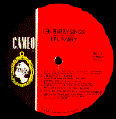
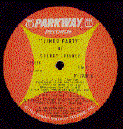
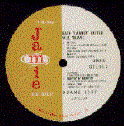
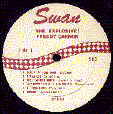
On Feb 15, 1958 The Dick Clark Show received a spot in ABC-TV's Saturday night line up.. It featured established as well as new acts and was broadcast live from New York. Twenty million fans were watching American Bandstand and by the end of the year was being carried on sixty-four stations.
With the large number of viewers having a new song played on the show virtually guaranteed that thousands of the record would be sold in the next week. A record played daily had a good chance of going top ten. Agents attempted to get their acts on the show. Soon the power of the show became a concern within the music business."The man was big. He was the biggest thing at the time in America at that time. He was bigger than the President!" ....... Hank Ballard, The Midnighters
Many people in the business thought Clark was more concerned with local music companies then national desires. Philadelphia's record companies were frequent guests. They also noted, Clark had invested in local record pressing plants and the records they manufactured were played more often on American Bandstand then those from elsewhere.
In 1959 a US Senate subcommittee began investigating payola within the music business.Clark along with Alan Freed were of particular interest to the committee. Investigators found that Clark had partial copyrights to one hundred and fifty songs, many of them were played on his show. Also, there were ties to thirty three music related businesses, including publishers, recording companies, and pressing plants, most being located in Philadelphia.
Clark admitted to accepting a fur stole and expensive jewelry from a record company president. He was admonished for only this single transgression, despite the fact that songs and artists that he held considerable financial interests were frequently feature on American Bandstand.
At the end of the investigation the Senators could find nothing illegal. In mid October, 1959 ABC-TV told Clark to give up these outside businesses or leave the network. Clark sold those interests
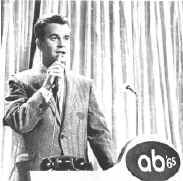
In 1973 Clark produced the American Music Awards Show. The show was to offset what younger music executives felt of the Grammy awards toward "adult contemporary music" Clark also became host for "$10, 000 Pyramid" and "TV's Bloopers and Practical Jokes"
Shares of Dick Clark Productions began trading in 1987. In 1990s he produced made for TV films as well as theatrical movies
Clarks personal taste in music was set in the 40s. This can be seen in American Bandstand he choose "Bandstand Boogie" by Les Elgarts Orchestra. The Dick Clark Showshifted away from rockers and by 1959 "pop" performers were appearing frequently
Clark tried to get a feel for the music he played and genuinely liked the teenagers and performers as individuals. However, Clark said that the sole reason for his relationship with rock and roll was for the money. Asked what his main contribution was Clark replied that he was proud to present more artists on television then anyone else. However, Clark had a large share of the responsibility for changing rock and roll from a vital energized music in 1956 into the homogenized 'teenpop' in 1959
Dick Clark was inducted into the Rock and Roll Hall of Fame in 1993

No comments:
Post a Comment